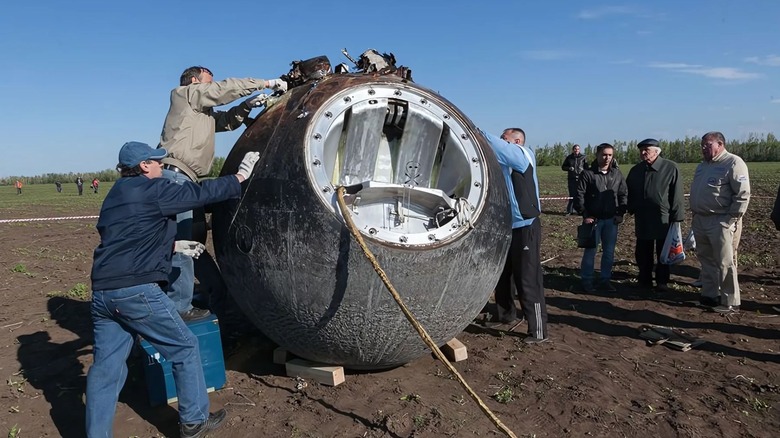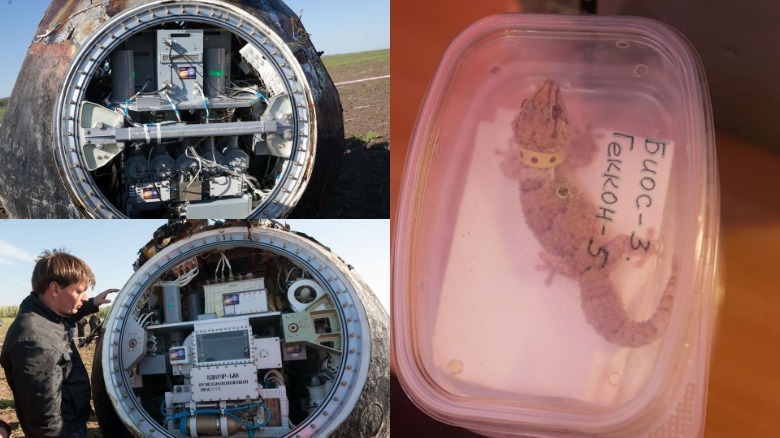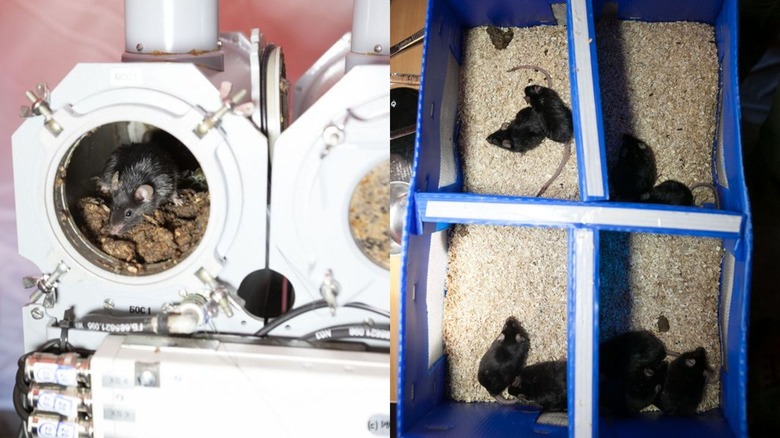Russian 'Noah's Ark' Probe Lands Back On Earth – Here's What Its 30-Day Mission Was For
Mankind has been sending animals into space since long before the first human being reached the milestone. Monkeys, dogs, and chimpanzees were launched into space to assess whether a person could survive the microgravity and radiation exposure, and the experiments have continued. The latest in the series of such experiments is the Bion-M No. 2 experiment, which returned to Earth earlier this month.
The biosatellite, which is being referred to as the "Noah's Ark" mission, began as a collaboration between the Institute of Biomedical Problems of the Russian Academy of Sciences (IBMP RAS) and the National Aeronautics and Space Administration (NASA). Launched from the Baikonur cosmodrome in Kazakhstan aboard a Soyuz-2 series rocket, the scientific experiment spent over a month in space. In addition to 75 mice, the biosatellite also carried over 1,500 flies and a wide assortment of microscopic life forms, cell cultures, and plant specimens.
Owing to the variety of the species aboard the biosatellite, it attracted the unofficial "Noah's Ark" moniker after the Biblical tale of a vessel that saved mankind and all animal species after a massive flood. As part of the mission, experts are now studying the impact of higher radiation exposure, which is predicted for "environment of real deep space flight" missions. In addition to the analysis of biological systems, the Bion-M2 project is also focused on testing the efficiency of electronics systems for long-range space flights, and how learnings from space travel can help improve medical science on Earth.
A stepping stone for deep space exploration
Aside from its perceived ideological semblance to the Biblical ark, the Bion-M No. 2 biosatellite tested biological life in harsher conditions. For example, the microgravity is significantly lower compared to what astronauts feel on the International Space Station. Another objective is to venture further where the true extent of radiation exposure on biological systems is not fully known. For comparison, the orbital altitude of the space station varies between 370 and 460 kilometers (200–250 miles). The Bion-M No. 2 module, carrying various biological samples, spent a month at an altitude of 1,000 kilometers. One of the core benefits of this higher altitude is to study the influence of "increased doses of broad-spectrum cosmic radiation" and the radiation sensitivity of our body systems.
In particular, scientists hope to study the central nervous system, webbed skeleton structures, water-salt exchange regulation, cardiovascular system, external breathing system, immune system, regenerative system, animal behavior, cellular and molecular outcomes of the combined effects of space radiation and microgravity. The biological analysis was conducted before the flight on all the living specimens, and it has shifted to the crucial post-flight assessment stage.
The findings are supposed to help astronauts prepare for deeper space missions and enable scientists to accordingly adjust medical supplies and health facilities onboard an exploration spacecraft. So far, scientists have mostly conducted modeling analysis based on the information they have gathered about deep space, but as the experts at IMBP note, "manned spaceflight is too important for its success to depend solely on modeling experiments." Projects like Bion-M No. 2 are a stepping stone towards studying the realistic impact on biological systems, especially humans, even if it starts with rodents and flies.


